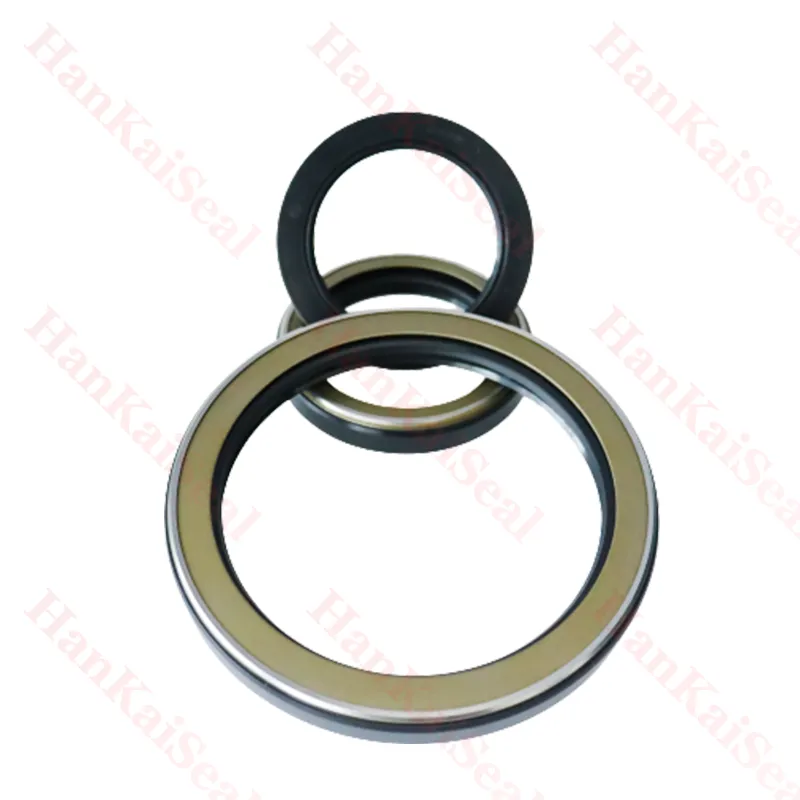des. . 15, 2024 11:13 Back to list
dust wiper seal
Understanding Dust Wiper Seals Importance and Functionality
Dust wiper seals play a crucial role in many industrial applications, particularly where machinery and equipment are subjected to harsh environments. These seals are designed to prevent dirt, dust, and other contaminants from entering critical areas of machinery, thereby extending the life of the equipment and enhancing operational efficiency. This article delves into the significance, function, and maintenance of dust wiper seals.
What are Dust Wiper Seals?
Dust wiper seals are typically found in a variety of machinery, including hydraulic cylinders, pneumatic cylinders, and other moving equipment. Their primary function is to act as a barrier that prevents particulate matter from infiltrating sensitive components. These seals are constructed from various materials, including rubber, polyurethane, and other synthetic compounds, chosen for their durability and ability to withstand environmental stresses.
The Importance of Dust Wiper Seals
1. Protection from Contaminants The primary purpose of dust wiper seals is to keep contaminants at bay. In industrial settings, where dust and debris are commonplace, the presence of a robust seal can mean the difference between machinery operating smoothly and experiencing premature wear or failure.
2. Enhancing Equipment Longevity By preventing the ingress of harmful substances, dust wiper seals significantly enhance the lifespan of machinery. Equipment that is regularly protected from contaminants is less likely to suffer from issues such as corrosion, wear and tear, and other forms of damage, ultimately saving costs on repairs and replacements.
3. Operational Efficiency Clean machinery operates more efficiently. Dust and dirt can cause moving parts to stick or operate less smoothly, leading to increased energy consumption and reduced performance. Dust wiper seals help maintain optimal performance levels by ensuring that components remain free of obstruction.
4. Safety Concerns Contaminants can lead to hazardous situations in certain industries. For example, in hydraulic systems, the presence of dirt can cause malfunctions that might lead to accidents. Dust wiper seals help mitigate these risks by ensuring cleaner operation of machinery.
dust wiper seal

Functionality of Dust Wiper Seals
Dust wiper seals typically work as part of a multi-seal system. They are usually positioned externally and are responsible for wiping away any dust that may adhere to the rod or piston of a cylinder as it retracts. The design may include an integrated lip that exerts pressure to effectively scrape off any particles while allowing the smooth movement of the machinery parts.
The design of dust wiper seals can vary based on the specific application and environment they are intended for. Some may be designed with additional features such as drainage channels to manage moisture, while others may be reinforced for heavy-duty applications.
Maintenance of Dust Wiper Seals
To ensure that dust wiper seals function as intended, regular maintenance is essential. Inspections should be performed to check for signs of wear or damage. If a seal is compromised, it should be replaced promptly to prevent contaminants from entering the system.
Additionally, cleaning around the seal area can help prolong the life of the wiper seal. Operators should be cautious to avoid using abrasive materials that could damage the seal during the cleaning process.
Conclusion
In conclusion, dust wiper seals are indispensable components in a wide array of machinery used in various industries. Their ability to keep contaminants at bay enhances the durability and efficiency of equipment, ultimately leading to safer and more reliable operations. By understanding their function and importance, operators can take the necessary steps to maintain these vital seals, ensuring that their machinery remains operational and efficient throughout its lifespan. Whether in construction, manufacturing, or any other sector, the care and maintenance of dust wiper seals are essential for optimal performance.
-
TCN Oil Seal Metal Ring Reinforcement for Heavy Machinery
NewsJul.25,2025
-
Rotary Lip Seal Spring-Loaded Design for High-Speed Applications
NewsJul.25,2025
-
Hydraulic Cylinder Seals Polyurethane Material for High-Impact Jobs
NewsJul.25,2025
-
High Pressure Oil Seal Polyurethane Coating Wear Resistance
NewsJul.25,2025
-
Dust Proof Seal Double Lip Design for Construction Equipment
NewsJul.25,2025
-
Hub Seal Polyurethane Wear Resistance in Agricultural Vehicles
NewsJul.25,2025
-
The Trans-formative Journey of Wheel Hub Oil Seals
NewsJun.06,2025
Products categories
















